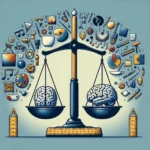Title: Unveiling the Correlation Between Artistic Abilities and IQ Scores
Are you someone who has marveled at the connection between raw artistic talent and intelligence? If so, you’re not alone in pondering this fascinating subject. For centuries, the question of whether IQ—the standard measure of cognitive abilities—can accurately gauge one’s artistic prowess has intrigued scholars, educators, and art enthusiasts alike. In this article, we will delve deep into the intricate relationship between artistic abilities and IQ scores to understand if and how these two complex facets of human capability intertwine.
First, let’s define what we mean by ‘artistic abilities.’ These entail far more than the skill to paint a beautiful picture or sculpt a masterpiece. Artistic abilities encompass creativity, innovation, and the unique expression of thoughts and emotions through a variety of mediums such as music, writing, dance, and performance art. These talents often involve a rich interplay of imagination, emotional sensitivity, and fine motor skills. But can these multifaceted qualities be adequately measured by an IQ test?
IQ, or Intelligence Quotient, is a score derived from standardized testing designed to assess human intelligence. Traditionally, IQ tests evaluate several areas, including logical reasoning, pattern recognition, mathematical ability, and language proficiency. These cognitive domains are thought to reflect one’s potential for success in academic and problem-solving endeavors. However, what IQ tests may not directly account for are the nuanced and subjective aspects of creativity and artistic expression.
Research over the years has provided mixed results regarding the relationship between artistic talent and IQ levels. On one hand, some studies suggest that those with higher IQ scores may have increased capacity for creative thinking and problem-solving, potentially benefiting artistic creation. Indeed, cognitive abilities like pattern recognition and spatial awareness can contribute to one’s mastery of artistic skills. Yet, on the other hand, numerous cases demonstrate that individuals of average or even below-average IQs exhibit extraordinary artistic talents. History is replete with renowned artists who defy the notion that intelligence can be represented by a single number.
The issue becomes even more complex upon considering the different types of intelligence. Howard Gardner’s theory of multiple intelligences suggests that traditional IQ measurements may overlook other important forms of intelligence, such as spatial, bodily-kinesthetic, and interpersonal intelligences—each of which can be critical to various art forms. For instance, the spatial intelligence of an architect or the bodily-kinesthetic intelligence of a dancer may not be accurately captured in a standard IQ score.
Furthermore, measuring artistic ability involves a level of subjectivity that is inherently resistant to standardized testing. The emotional impact of a piece of music or the depth of a painting can hardly be quantified in the same way one would score an algebra test. Artistic interpretation varies greatly among individuals, and the meaning derived from art is often unique to the observer’s personal experience and perspective.
In conclusion, the notion of measuring artistic abilities by IQ is more complex than it may initially appear. While certain aspects of cognitive function, as gauged by IQ tests, could influence one’s artistic talents, it’s essential to recognize that creativity and artistic expression extend beyond the realm of standardized metrics. Artistic talent is, in many ways, immeasurable and boundless, residing in a space where emotional depth and subjective experience reign supreme. Whether you are an artist seeking to understand your own abilities or a curious mind exploring the fascinating intersection of intelligence and creativity, it’s vital to remember that the true essence of art lies beyond the confines of a numerical IQ score.

